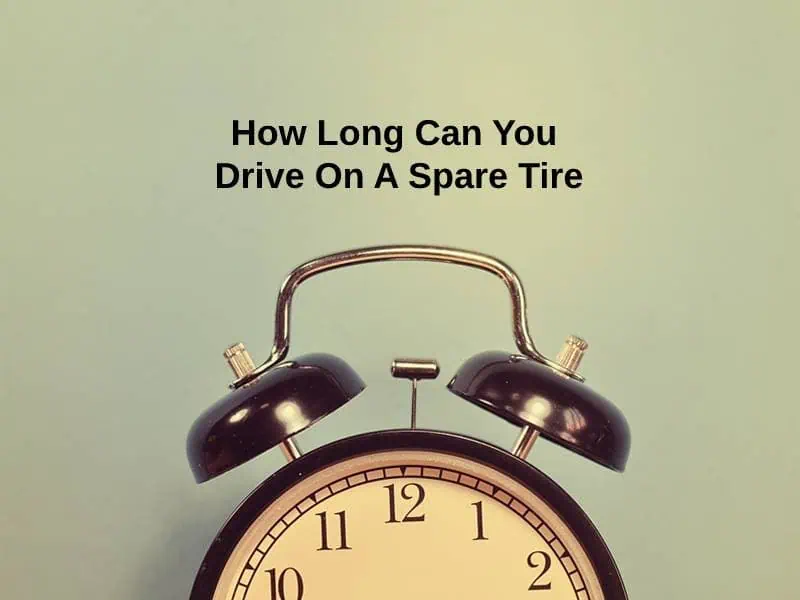Exact Answer: 50-60 Miles
Every model of a vintage car came with a spare tyre that matched the tyres already installed on the vehicle. Carmakers have discovered throughout the years that because spare tyres are used so infrequently, it makes little sense to supply every vehicle with a full-sized spare.
Manufacturers began leaving a space-saving spare in place of a full-size spare as a result of this. Spare tyres should never be used as a permanent replacement nowadays, which begs the question: how long can you drive on a spare tyre?
The sort of spare tyre you have in your vehicle affects how long and how far you can drive before having to mend or replace your tyre.

How Long Can You Drive On A Spare Tire?
| Type Of Spare Tyre | Duration |
| Donut tyres | 50-60 Miles |
| Run flat tyres | 40-70 Miles |
If we are talking about Donut spare tires then these short, narrow spares are designed to conserve room and weight in the vehicle, allowing manufacturers to create a smaller vehicle.
The tyre, on the other hand, isn’t built to last. Driving time and speed recommendations can be found in your owner’s manual. Before replacing your donut with a new tyre, a basic rule of thumb is to drive no more than 70 miles and no faster than 50 miles per hour.
The main reason to avoid using space-saver or donut tyres for an extended period is that they have little to no tread, leaving the spare tyre vulnerable to road dangers and projectiles. It’s also a lot smaller than the other three tyres, so it spins faster to keep up with the car.
Manufacturers are realising that run-flat tyres are less expensive to maintain than standard tyres, thus they’re becoming more popular. Run-flat tyres are standard equipment on most contemporary BMW and MINI models.
These tyres are more durable than ordinary tyres, but they are not built to last as long as a full-spare tyre. Instead of a spare tyre, these run-flat tyres are designed to withstand the majority of road dangers, including punctures.
A run-flat tyre, rather than going flat or blowing out, can travel for around 50 miles after being punctured before needing to be replaced. These tyres, on the other hand, are more expensive to replace than standard tyres.
Why Can You Drive On A Spare Tire For That Long?
The highest speed you can drive with a spare tyre is 50 mph in the vast majority of circumstances, though this may vary slightly. It depends on the type of spare tyre you are carrying.
This is written in large letters on the side of the spare tyre, with a similar notice in your automobile handbook. Depending on the type of spare tyre and the vehicle, certain cars may have slightly varying top speeds.
Check both the tyre and the instructions for accuracy, and choose the slower of the two speeds if they differ. Although many people do not take the advice seriously, adhering to the 50 mph speed limit is critical – the statement on the tyre is missing since the manufacturer ran out of space.
If you find yourself in the terrible situation of having to drive on a spare tyre, make sure you stick to this speed limit, even if you’re on the highway. If necessary, drive in the slow lane and, if permissible in your state, use hazard lights.
Conclusion
Every driver expects to never get a flat tyre. However, if that day comes, you’ll need to know how long you can drive on your spare tyre. Every driver dreads getting a flat tyre and hopes it never happens to them.
Smart drivers, on the other hand, must be prepared for it. Fortunately, most cars come with a spare tyre. It’s quite useful, and it’s one of the items you should always carry in your car.
Well, there are two sorts of spare tyres, and knowing which one you have is critical when answering the question “how long can you drive on a spare tyre.” I hope this blog has been of some assistance to you.